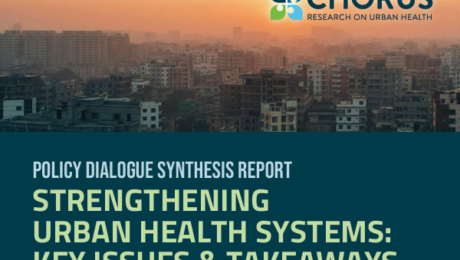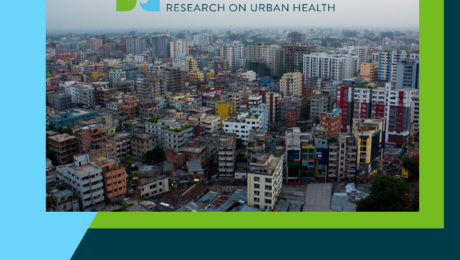Download Report Bangladesh is preparing to introduce a maternity insurance scheme by 2026, aligning with its National Social Security Strategy. This report presents an evidence-based framework tailored to the country’s healthcare and labour realities, especially for low-income and informal sector women. Drawing on national data and international best practices, it outlines a universal, mandatory, and
- Published in Featured, Maternal Newborn Child and Reproductive Health, Report, Resources
No Comments
Download PDF Report on Roundtable on ‘Health Budget FY2025-26: Expectations & Realities’ The national budget for FY 2025–26 in Bangladesh carries significant importance, as the country stands at a critical juncture in its journey toward a new era. Under the leadership of the interim government, Finance Advisor Dr. Saleh Uddin Ahmed unveiled a Tk 790
The Community-led Responsive and Effective Urban Health System (CHORUS) is a research programme consortium that unites health researchers from Africa, South Asia, and the UK. It collaborates with communities, health professionals, and city-level decision-makers to develop and test strategies aimed at improving the health of the poorest urban residents. CHORUS and ARK Foundation hosted
The Community-led Responsive and Effective Urban Health System (CHORUS) is a Research Programme Consortium that brings together health researchers from Africa, South Asia, and the UK. CHORUS collaborates with communities, health professionals, and city-level decision makers to develop and test strategies for improving the health of the poorest urban residents. As part of its ongoing
This flipbook is an intervention material developed under the COSTAR project to be used by the Community Dialogue Facilitators (CDA) facilitators in different sub-districts of Cumilla. The CDA Facilitators used this flipbook to create awareness among the local people in their villages on Antimicrobial Resistance (AMR) and its harmful consequences. This is an open access materials
Antimicrobial resistance (AMR) poses a significant threat to global public health, with increasing treatment failures and related mortality exacerbated by complex socio-economic, cultural, and gender dynamics. Recognising the critical role of gender and related inequalities in shaping health behaviours and outcomes, this guidance document aims to provide AMR community engagement operational researchers and practitioners with
- Published in Report, Resources, Uncategorized
অ্যান্টিমাইক্রোবিয়াল রেজিস্ট্যান্স (এএমআর)) বিশ্বব্যাপী জনস্বাস্থ্যের জন্য ভয়াবহ হুমকিস্বরূপ। এছাড়াও জটিল আর্থ-সামাজিক, সাংস্কৃতিক এবং লিঙ্গ বৈচিত্র্যতার কারণে ক্রমবর্ধমান চিকিৎসাজনিত জটিলতার কারণে মৃত্যুহার বৃদ্ধি পাচ্ছে। লিঙ্গবৈচিত্র্য বা নানা সামাজিক বৈষম্য কীভাবে মানুষের স্বাস্থ্যগত আচরণকে প্রভাবিত করে তা যাচাই করার জন্য সহায়ক নানা সরঞ্জাম নিয়ে এই নির্দেশিকাটি প্রস্তুত করা হয়েছে। এই নির্দেশিকার মূল লক্ষ্য হল কমিউনিটির মানুষদের মাঝে
We searched the medical literature to review the evidence on the effects of pharmacological (drug), behavioural (behaviour change) and organisational (delivery of health care) interventions for the prevention of type 2 diabetes among people with mental disorders in low‐ and middle‐income countries (LMICs). Type 2 diabetes is a serious health condition that may develop when
This Report was written by Advancement Through Research and Knowledge (ARK) Foundation in Bangladesh. The researchers estimate that the total price elasticity of demand for cigarettes is -0.71. A 10% increase in the price of cigarettes would reduce smoking by 7.1 percent, meaning that cigarette demand is inelastic. PDF Version | HTML Version
This report presents an overview of the COVID-19 response in the country from February to the End of August 2020. It focuses on the response related to urban health in the country and tries to portray the interaction of different stakeholders and the deciding authorities in Covid-19 management in urban areas. PDF Version | HTML Version
- 1
- 2








